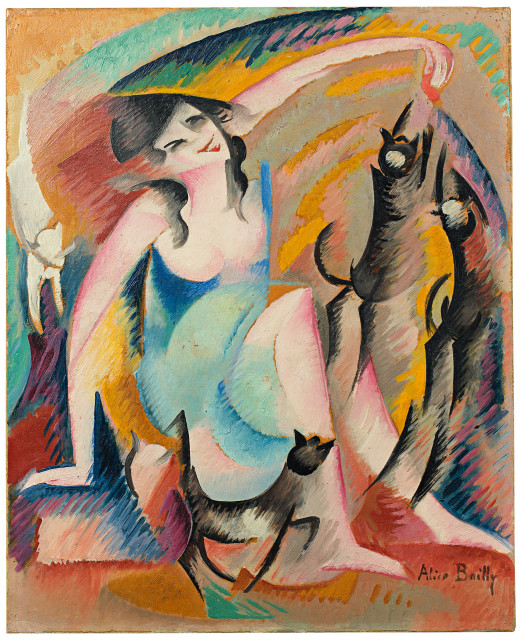- EN
Log in
- Live Auctions
- Past auctions
- More
- Gallery
- Art Dealing
- Publishing
- Kornfeld today
- The Story of Kornfeld
- Information





Genf 1872 - 1938 Lausanne
Circa 1913
Oil on brown paper, mounted on cardboard, backed with canvas
43x35 cm
Signed by the artist in brush in oil on the lower right "Alice Bailly"
Galerie Georges Moos, Genève, Inv. no. 1493 (with label)
Gallery Artimedes, Schaan (with stamp)
Private collection Switzerland
Lausanne 2005-2006, Musée cantonal des beaux-arts, Alice Bailly, La fête étrange, cat. no. 64, pag. 61, reprod. in colours
Doubled on cardboard and loosely backed with canvas. Clean in condition. Few retouches
Alice Bailly is considered an avant-garde painter. Her work is characterised by Fauvist, Futurist and Cubist influences, which she absorbed in Paris before the First World War. Bailly developed her own new form under the influence of these styles of painting. Thus, Guillaume Apollinaire wrote in Le Soirée de Paris on 15 March 1914: "Alice Bailly expresses much freshness of feeling in a modern technique." The present painting contains above all the characteristics of Futurism, in that Bailly depicts the rhythmic movements as dissolved colourful planes of colour
Um 1913
Öl auf braunem Papier, auf Karton aufgezogen, mit Leinwand hinterlegt
43x35 cm
Unten rechts von der Künstlerin in Pinsel in Öl signiert "Alice Bailly"
Galerie Georges Moos, Genève, Inv.
Galerie Artimedes, Schaan (mit Stempel)
Privatsammlung Schweiz
Lausanne 2005-2006, Musée cantonal des beaux-arts, Alice Bailly, La fête étrange,
Doubliert auf Karton und lose hinterlegt mit Leinwand. Sauber in der Erhaltung. Wenige Retouchen
Alice Bailly gilt als avantgardistische Malerin. Ihr Schaffen ist geprägt von fauvistischen, futuristischen und kubistischen Einflüssen, die sie in Paris vor dem Ersten Weltkrieg aufnahm. Bailly entwickelte unter dem Einfluss dieser Stile der Malerei ihre neue, eigene Form. So schreibt Guillaume Apollinaire im "Le Soirée de Paris" am 15. März 1914: "Alice Bailly drückt in einer modernen Technik viel Frische des Gefühls aus." Das vorliegende Gemälde beinhaltet vor allem die Eigenschaften des Futurismus, indem Bailly die rhythmischen Bewegungen als aufgelöste bunte Farbflächen darstellt






